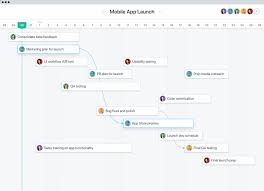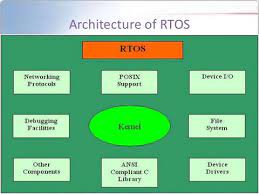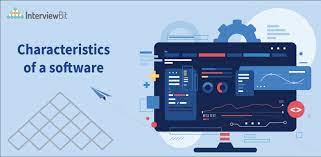Exploring the Evolution of the Windows Operating System
The Windows Operating System: A Comprehensive Overview
Windows, developed by Microsoft, is one of the most widely used operating systems in the world. Known for its user-friendly interface and extensive range of features, Windows has become a staple in both personal and professional computing environments.
Evolution of Windows
Since its inception in the 1980s, Windows has undergone significant evolution with each new version introducing improvements in performance, security, and usability. From Windows 1.0 to the latest Windows 10 and beyond, Microsoft has continued to innovate and adapt to the changing technological landscape.
Key Features of Windows
Windows offers a multitude of features designed to enhance productivity and efficiency. Some key features include:
- User-Friendly Interface: The graphical user interface (GUI) of Windows makes it easy for users to navigate and interact with their devices.
- Multitasking Capabilities: Windows allows users to run multiple applications simultaneously, increasing productivity.
- Built-in Security: With features like Windows Defender and regular security updates, Windows prioritises protecting users from malware and cyber threats.
- Compatibility: Windows supports a wide range of software applications and hardware devices, ensuring seamless integration with various tools and peripherals.
- Cortana Integration: The virtual assistant Cortana provides voice-activated assistance for tasks such as setting reminders, searching the web, and managing your schedule.
The Future of Windows
As technology continues to advance, Microsoft is constantly refining the Windows operating system to meet the evolving needs of users. The shift towards cloud computing, artificial intelligence integration, and enhanced security measures are just some of the areas where Microsoft is focusing its efforts to shape the future of Windows.
In conclusion, the Windows operating system remains a dominant force in the world of computing due to its versatility, reliability, and continuous innovation. Whether you are a casual user or a business professional, Windows offers a comprehensive solution that caters to a wide range of needs.
Nine Key Advantages of the Windows Operating System: From User-Friendly Navigation to Advanced Gaming Support
- User-friendly interface for easy navigation
- Extensive software compatibility with a wide range of applications
- Built-in security features like Windows Defender for malware protection
- Regular updates and patches to enhance system performance and address vulnerabilities
- Multitasking capabilities to run multiple applications simultaneously
- Integration with Cortana virtual assistant for voice-activated assistance
- Seamless connectivity with various hardware devices and peripherals
- Customisation options to personalise the user experience
- Support for gaming with DirectX technology for enhanced graphics performance
Three Drawbacks of the Windows Operating System: Security Vulnerabilities, Resource Demands, and Disruptive Updates
- Windows operating system is susceptible to viruses and malware, requiring regular security updates and vigilance.
- Windows can be resource-intensive, leading to slower performance on older or less powerful hardware.
- Windows updates can sometimes disrupt workflow by requiring system restarts at inconvenient times.
User-friendly interface for easy navigation
The user-friendly interface of the Windows operating system stands out as a significant advantage, providing users with intuitive navigation tools that simplify interactions with their devices. With its graphical user interface (GUI), Windows offers a familiar and accessible layout that allows users to effortlessly locate and utilise various features and applications. This ease of navigation enhances user experience, making Windows a preferred choice for individuals seeking a seamless and straightforward computing environment.
Extensive software compatibility with a wide range of applications
The Windows operating system boasts extensive software compatibility, offering users access to a vast array of applications tailored to meet various needs. Whether it’s productivity tools, creative software, or entertainment applications, Windows provides a platform where users can easily find and utilise a diverse range of programs. This broad compatibility ensures that users have the flexibility to choose from a wide selection of software options, making Windows a versatile operating system that caters to different preferences and requirements.
Built-in security features like Windows Defender for malware protection
One notable advantage of the Windows operating system is its robust built-in security features, exemplified by Windows Defender for malware protection. Windows Defender serves as a reliable shield against various forms of malicious software, offering users a layer of defence to safeguard their systems and data. With regular updates and real-time scanning capabilities, Windows Defender provides peace of mind by proactively identifying and neutralising potential threats, reinforcing the overall security posture of the Windows environment.
Regular updates and patches to enhance system performance and address vulnerabilities
One significant advantage of the Windows operating system is its commitment to providing regular updates and patches to improve system performance and address vulnerabilities. Microsoft’s proactive approach ensures that users receive timely enhancements and security fixes, helping to maintain the stability and reliability of their systems. By regularly updating the operating system, Windows users can benefit from new features, improved functionality, and strengthened security measures, ultimately enhancing their overall computing experience while mitigating potential risks posed by cyber threats.
Multitasking capabilities to run multiple applications simultaneously
One of the standout advantages of the Windows operating system is its exceptional multitasking capabilities, allowing users to seamlessly run multiple applications simultaneously. This feature empowers users to boost their productivity by effortlessly switching between different tasks without compromising performance. Whether it’s working on a document while browsing the web, editing images alongside listening to music, or running complex software applications concurrently, Windows provides a smooth and efficient multitasking experience that enhances user efficiency and workflow management.
Integration with Cortana virtual assistant for voice-activated assistance
One notable advantage of the Windows operating system is its seamless integration with Cortana, a virtual assistant that offers voice-activated assistance to users. By utilising Cortana, Windows users can easily perform tasks such as setting reminders, searching the web, managing their schedule, and accessing information hands-free. This feature enhances user productivity and convenience by providing a convenient way to interact with their devices using natural language commands. The integration of Cortana into Windows exemplifies Microsoft’s commitment to incorporating innovative technologies that streamline user experiences and improve accessibility in computing environments.
Seamless connectivity with various hardware devices and peripherals
One of the standout advantages of the Windows operating system is its seamless connectivity with a diverse array of hardware devices and peripherals. Whether it’s printers, scanners, external storage drives, or other accessories, Windows excels in providing robust compatibility and easy integration. This feature not only simplifies the setup process for users but also ensures that they can effortlessly expand their computing capabilities by connecting a wide range of devices without encountering compatibility issues. The ability of Windows to interact seamlessly with various hardware components enhances user convenience and productivity, making it a preferred choice for individuals and businesses alike.
Customisation options to personalise the user experience
One notable advantage of the Windows operating system is its extensive customisation options that allow users to personalise their experience. From changing desktop backgrounds and themes to customising taskbars and icons, Windows provides a range of tools and settings to tailor the interface to individual preferences. Whether it’s adjusting colour schemes, font sizes, or organising shortcuts, the flexibility of customisation in Windows enables users to create a workspace that reflects their unique style and enhances productivity. This level of personalisation not only makes the user interface more visually appealing but also contributes to a more comfortable and efficient computing experience for each user.
Support for gaming with DirectX technology for enhanced graphics performance
Windows operating system offers exceptional support for gaming through its implementation of DirectX technology, providing users with enhanced graphics performance and immersive gaming experiences. DirectX, a collection of APIs developed by Microsoft, enables developers to create visually stunning games that take full advantage of the hardware capabilities of Windows-based systems. With DirectX, gamers can enjoy smoother frame rates, realistic visual effects, and seamless gameplay, making Windows a preferred choice for gaming enthusiasts looking to push the boundaries of graphical fidelity and performance in their gaming sessions.
Windows operating system is susceptible to viruses and malware, requiring regular security updates and vigilance.
The susceptibility of the Windows operating system to viruses and malware poses a significant challenge for users, necessitating constant vigilance and regular security updates to mitigate potential risks. Malicious software can exploit vulnerabilities within the system, compromising data security and potentially causing system malfunctions. This ongoing threat underscores the importance of maintaining robust antivirus protection and staying informed about emerging security threats to safeguard against potential cyber attacks on Windows-based devices.
Windows can be resource-intensive, leading to slower performance on older or less powerful hardware.
One notable drawback of the Windows operating system is its tendency to be resource-intensive, which can result in slower performance, particularly on older or less powerful hardware. The demanding nature of Windows, especially with newer versions that require more processing power and memory, can lead to sluggish performance, longer boot times, and delays in executing tasks on devices that do not meet the recommended system requirements. This limitation may pose challenges for users looking to run Windows on older machines or budget-friendly hardware configurations, as they may experience performance issues that hinder their overall computing experience.
Windows updates can sometimes disrupt workflow by requiring system restarts at inconvenient times.
One notable drawback of the Windows operating system is its tendency to disrupt workflow with untimely system updates that necessitate mandatory restarts. These updates, often crucial for maintaining system security and performance, can interrupt work processes and productivity when they occur at inconvenient times. Users may find themselves unexpectedly forced to restart their systems, potentially losing unsaved work or disrupting ongoing tasks. This lack of control over update scheduling can be frustrating for individuals who rely on uninterrupted workflow, highlighting a significant con of the Windows operating system in terms of user experience and efficiency.












